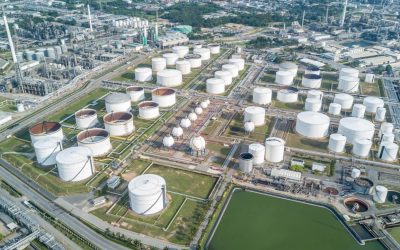The oil and gas industry plays a crucial role in powering our modern world. The extraction of these valuable resources requires an intricate and multifaceted supply chain, with each component serving a distinct purpose. One essential element in the oil and gas extraction process is frac sand. This specialized type of sand is vital for hydraulic fracturing, or “fracking,” as it helps to unlock hydrocarbons trapped deep within the Earth’s crust. Transporting frac sand from its source to the drilling site is a critical part of the operation, and in this article, we’ll explore the importance and logistics of this process.
The Role of Frac Sand in Oil and Gas Extraction
Frac sand, short for hydraulic fracturing sand, is a high-purity quartz sand that is used in the hydraulic fracturing process to extract oil and natural gas from deep underground rock formations. Hydraulic fracturing involves the injection of a mixture of frac sand, water, and chemicals into a wellbore at high pressure. This creates fractures in the rock, allowing oil and gas to flow more freely to the surface.
Frac sand is an integral component of this process, serving several essential functions:
Propping Open Fractures: The sand particles are designed to “prop” open the fractures created in the rock, preventing them from closing after the pressure is released. This allows for continued oil and gas flow.
Conductivity: Frac sand’s high conductivity ensures that the fractures remain open and permeable, allowing oil and gas to flow more efficiently.
Filtering Properties: Frac sand acts as a filter, preventing solids and other particles from clogging the wellbore and interfering with production.
Given its significance in the fracking process, transporting frac sand to drilling sites efficiently and effectively is crucial for the industry’s success.
Logistics of Transporting Frac Sand
Transporting frac sand involves several key logistical considerations:
Sourcing: Frac sand is typically sourced from specific geological formations with the right grain size and purity. Major frac sand-producing regions in the United States include Wisconsin, Texas, and Oklahoma.
Extraction and Processing: Once sourced, the sand must be extracted, processed, and sized to meet industry standards. It is then loaded onto trucks or railcars for transport.
Transportation Modes: Frac sand can be transported via various methods, including trucks, rail, and even conveyor belts. The choice of transportation mode depends on factors such as distance, volume, and destination.
Safety and Environmental Regulations: Transporting frac sand must adhere to strict safety and environmental regulations to protect both workers and the environment. This includes proper labeling, securing loads, and adhering to road weight limits.
Timing and Efficiency: Timing is of the essence in the oil and gas industry. The logistics of transporting frac sand must be carefully coordinated to ensure that sand arrives at the drilling site exactly when needed to minimize downtime.
Unloading and Storage: Efficient unloading and storage facilities must be in place at the drilling site to ensure the sand is readily available for the fracking operation.
Transportation Challenges
The transportation of frac sand also faces specific challenges:
Seasonal Factors: In regions like Wisconsin, where much of the frac sand is sourced, harsh winters can make transportation more difficult. Snow and ice can hinder truck and rail transport, leading to logistical challenges.
Infrastructure: Adequate infrastructure, including well-maintained roads and railways, is essential for transporting frac sand over long distances. Investments in infrastructure are often needed to support the industry.
Environmental Concerns: Transporting frac sand can raise environmental concerns, particularly regarding dust emissions. Effective dust control measures must be implemented to protect the environment and local communities.
Conclusion
Transporting frac sand is a vital link in the oil and gas industry’s supply chain. The effective and efficient movement of this specialized sand from its source to the drilling site is essential for the success of hydraulic fracturing operations. As the oil and gas industry continues to evolve and grow, the logistics of frac sand transportation will remain a critical consideration, necessitating attention to safety, environmental responsibility, and ongoing efforts to optimize the supply chain.



